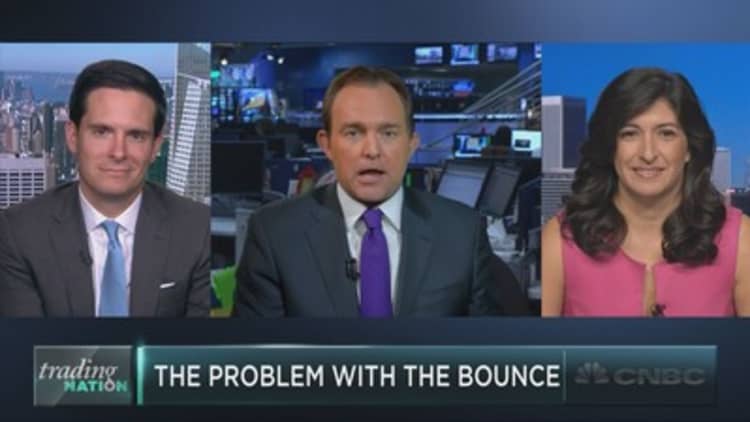
There's no arguing that the bounce in stocks has been substantial. The has risen 13 percent in the five weeks since its Feb. 11 low — and closed on Friday just above its exact break-even level for 2016.
But there's something a bit, well, quiet about this whoosh higher.
"On rallies like this, we like to see an endorsement from money flow and from value trading and from volume, and that's one aspect of this move that falls a little bit short," Chris Verrone of Strategas Research Partners said Friday on CNBC's "Trading Nation."
Indeed, he points out that volume has been seriously bifurcated between the market drop that dominated the first weeks of the year, and the rebound that has been the story of the next month and change.
"Since the February 11th low, average daily volume on the S&P has been about 35 percent less than what it was in the first four or five weeks of the year," the technical analyst pointed out.
In addition, ETF fund flows have interestingly shifted from positive to negative as the market has turned higher. To wit, the SPDR S&P 500 ETF (SPY) enjoyed $1.75 billion of net inflows between Jan. 4 through Feb. 11, but has suffered $1.4 billion worth of outflows between then and Friday, according to data from ETF.com.
This is a sign that "people are thinking that the U.S. markets are overbought at these levels, and moving their money to emerging markets and even gold," said Mohit Bajaj, director of ETF trading solutions at WallachBeth Capital.
"We sold off 10 percent, now we're up 10 percent — people are not fully confident that the S&P is going to stay at these levels," Bajaj told CNBC in a phone interview Friday.
Read More Dow, S&P end green for 2016 as health care, financials lead
For Verrone, it's not yet time to get bearish on stocks, since the charts themselves look decent, and "the calendar is at our backs for another four to five weeks," meaning that the market has historically tended to do well during this time of year.
But he certainly doesn't foresee significant upside, either.
"We're look to fade this in the 2075-type-range," Verrone said, referring to a level just 1.2 percent above Friday's closing price.






